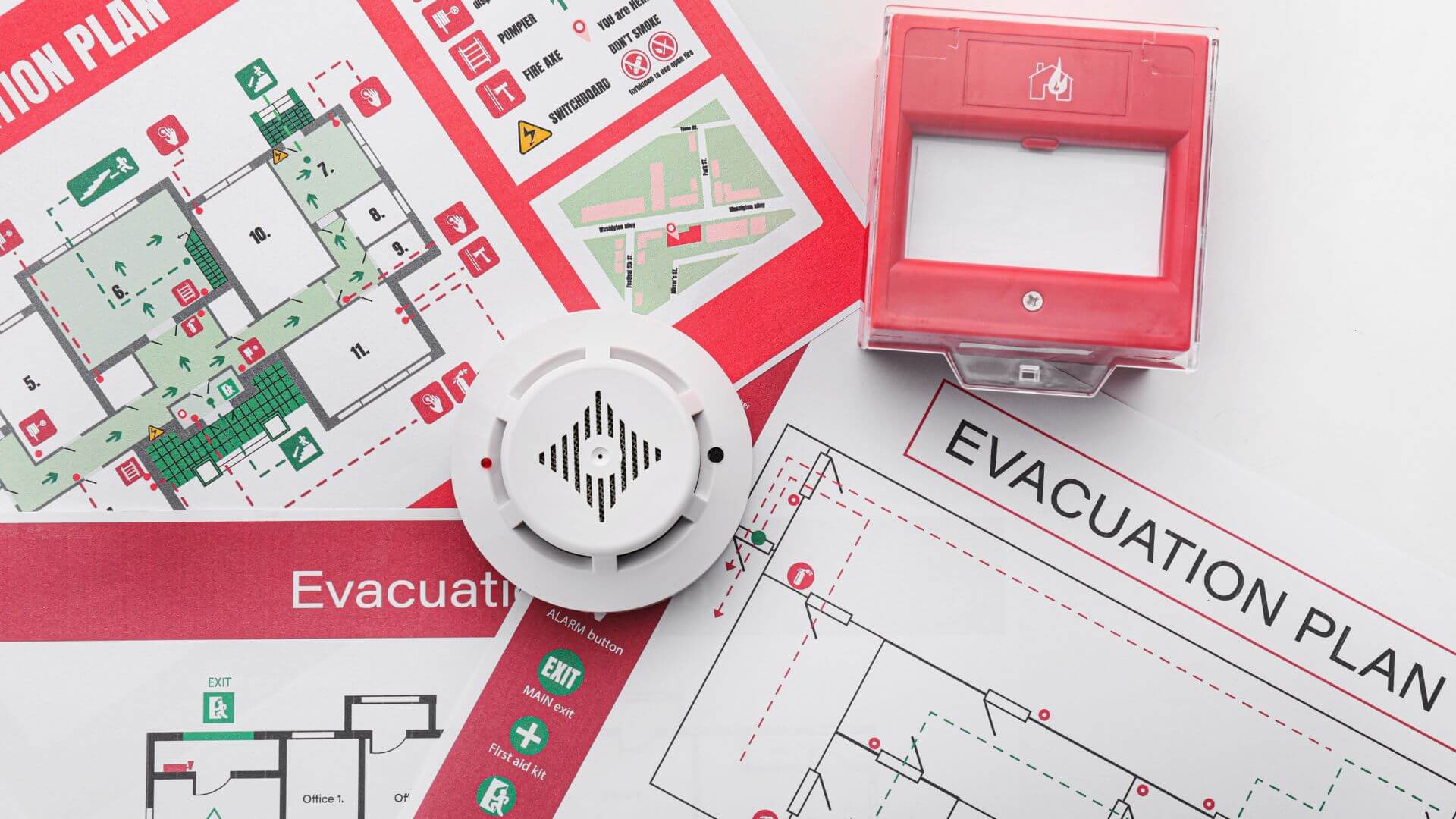As an employer, you have a legal obligation to protect the health and well-being of your employees. Harmful materials can potentially lead to negative health impacts on employees.
It's crucial to guarantee employees protection from such dangers.
Poor health not only affects employees, it can significantly impact your business with increased absenteeism and decreased productivity profits. Not to mention the impact workplace accidents have on morale, productivity and even staff retention.
There are a great deal of substances that can be hazardous to your employees health and even to other members of the public, such as your customers and clients. Some such substances, as in the case of asbestos, have their own set of regulations due to the severity of their risks to health. For other substances deemed hazardous to health, COSHH regulations define how to deal with these substances safely.
Chemicals and fumes may seem like obviously hazardous substances, but even dust can be harmful to health and there may be some substances harmful to health that you may not be aware of or consider a risk. Thankfully the Croner Health & Safety experts have collated a complete guide to COSHH to help you navigate your responsibilities as an employer and what you should be aware of when it comes to hazards in the workplace.
If you need immediate advice on COSHH or want to gain a better understanding of health regulations, get in touch with one of our health and safety experts on 0800 470 2723.

What is COSHH?
COSHH stands for ‘Control of Substances Hazardous to Health,’ and the law requires it.
COSHH rules mandate that an employer must manage these materials and ensure that all precautions are adhered to and implemented. This is to prevent anyone from facing health risks from exposure to these substances, whether through their work or other means.
A COSHH risk assessment concentrates on hazardous substances and highlights areas where control measures are needed to keep employees and other people safe.
Under the Control of Substances Hazardous to Health Regulations (COSHH, 2002), the law requires employers to either prevent, reduce, or at the very least, control exposure to hazardous substances to prevent ill health in their workers or any other person(s). It is therefore an extremely broad yet detailed piece of legislation and will apply differently to every business.
There are a multitude of substances that can be harmful to employees, and the list is too exhaustive for even the Health and Safety Executive to fully define.
Why is COSHH important?
The Control of Substances Hazardous to Health Regulations 2002 aims to keep your team and other people out of harm’s way, reducing the number of work-related injuries and health conditions across the UK.
Breaching these regulations puts your workers, members of the public and even yourself at risk of harm and ill health. Non-compliance is also a criminal offence that could result in prosecution. If an employee is injured as a result of COSHH not only could there be legal repercussions, but you could find that there are particularly harsh financial and reputational implications to your business.
Workers exposed to hazardous substances could suffer from an exhaustive list of health complications. These health issues could range from chronic conditions like lung disease and skin diseases, to fatal conditions like cancer and asbestosis, because of exposure. These diseases are not only massively costly in terms of the human element, but can cost millions of pounds each year to society and industry.
By following the COSHH Regulations, a company can save money and be more effective by not having to replace trained workers – improving productivity and cutting waste. Ensuring that workers stay healthy can also lead to healthy profits. Good health is good business.

Substances covered by COSHH
COSHH substances are hazardous to health. As mentioned before, there’s such a vast number of substances that come under the umbrella of COSHH, that it’s too difficult to list them all. For a more comprehensive list, take a look at the government's legislation. COSHH relies on a risk assessment to identify these substances in the workplace.
What hazardous substances are covered by COSHH?
The substances covered by COSHH can be divided into broader categories, such as:
- Products containing chemicals.
- Gases and asphyxiating gases.
- Biological agents (germs – If the packaging has any of the hazard symbols, then it is classed as a hazardous substance.)
Are there any substances not covered by COSHH?
Yes, these hazardous substances have their own set of specific regulations and control measures that employers must follow.
Lead
The Control of Lead at Work Regulations 2002 (CLAW) places a duty on employers to prevent or control (in instances where prevention is not reasonably practicable) employee exposure to lead.

Asbestos
Asbestos claims on average 5000 lives in the UK annually, even after some 25 years after it was banned from use. The Control of Asbestos Regulations 2012 contains the main rules for managing and working with asbestos.


Radiation
Radiation is commonplace in industry, medicine and communications. Some of these applications can be harmful, such as X-rays, Gamma and particulate radiation.
There are several pieces of legislation that deal with radiation, namely:
- The Ionising Radiation Regulations 2017 (IRR17)
- The Radiation (Emergency Preparedness and Public Information) Regulations 20019 (REPPIR)
- The Control of Artificial Optical Radiation at Work Regulations 2010 (AOR)
- The Control of Electromagnetic Fields at Work Regulations 2016 (CEMFAW)

What are COSHH symbols?
There are many COSHH signs and symbols you need to be aware of. Some of them are common, whereas you’ll only find others in certain work environments.
You can identify these symbols by the red diamond frame and black picture at the centre.
What's the purpose of COSHH signs?
They provide quick warnings of dangerous substances. The different signs cover a variety of substances, including:
- Chemicals
- Fumes
- Mists
- Vapours
- Products containing chemicals
- Nanotechnology
- Gases and asphyxiating gases
- Biological agents
- Germs that cause diseases
Recognising COSHH signs and understanding their meanings is crucial to keeping your staff safe. And ensuring they’re aware of the relevant dangers at work. In this next section, we’ll go through each symbol and explain what you should take from it.
COSHH symbols and meanings
Placed on the packaging of hazardous substances, COSHH symbols are there to tell you about the type of hazard a substance presents. The names below are not the official names given to each symbol.
The regulations give each symbol a range of meanings. So, we may know some categories by a couple of names, for example, we sometimes refer to health hazards as 'caution'.
Health hazards (Symbol: Exclamation mark)
This is a general COSHH hazard symbol that indicates that there are substances dangerous to health present.
It can also be used to indicate caution due to:
- Respiratory irritation
- Dizziness and/or drowsiness
- Allergic reactions
- Serious eye irritation
- Skin irritation
- Substances harmful if swallowed
- Damage on contact with skin
- Damage when inhaled
- Damage to public health by causing damage in the ozone layer
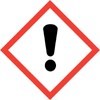
Flammable (Symbol: Open flame)
This symbol highlights flammable chemicals or substances that can ignite. Usually indicates:
- Flammable gas
- Highly flammable gas
- Highly flammable or flammable aerosol
- Highly flammable or flammable liquid or vapour
- A flammable solid
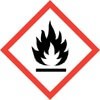
Serious health hazards (Symbol: Internal Damage)
This symbol represents serious long-term threats to health, such as if a hazard can:Lead to death if swallowed or inhaled
- Cause damage to organs
- Damage fertility or affect pregnancies
- Lead to or cause cancer
- Lead to or cause genetic defects
- Lead to asthma or breathing difficulties if inhaled

Gases under pressure (Symbol: Gas cylinder)
This symbol represents a situation where gas is under pressure. This includes:
- Gas contained under pressure may explode when heated
- Refrigerated gas, could lead to cryogenic injuries

Toxic (Symbol: Skull and crossbones)
This symbol represents chemicals that can cause a lot of damage in small quantities. This is usually when it:
- Can cause fatalities when swallowed, inhaled, or when it comes in contact with skin
- Can be toxic if swallowed, inhaled, or when it comes into contact with skin

Corrosive (Symbol: corrosion on hands and surface)
This symbol warns against chemicals that may cause damage on contact. This includes:
- Corrosion on metals
- Severe skin and eye damage
This is often found in ammonia, acetic acid, hydrochloric acid, drain cleaners etc.
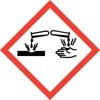
Dangerous for the environment (Symbol: a dead tree and fish)
This symbol represents the risk of substances that can cause serious damage to the environment. These could be immediate or long-term effects on multiple components. These are most commonly found in pesticides, biocides, petrol, etc.

Oxidising (Symbol: Open flame over a circle)
This symbol represents chemicals that can lead to a dangerous reaction with other chemicals. This may be anything that acts as an oxidiser that could increase the intensity of the fire. It could also lead to an explosion in some cases. This symbol is commonly seen on the label of bleach containers.
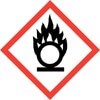
Explosive (Symbol: Bomb Exploding)
This symbol represents chemicals, substances or any workplace occurrence that may cause an explosion. This includes:
- Mass explosion hazards
- Severe projection hazards
- Fire, blast or projection hazards
- Mass exploding in fire
- Unstable explosions

COSHH Responsibilities
COSHH health and safety legislation requires employers to follow all procedures relating to substances that are hazardous to the health and anyone who comes to your premises. Control measures must be implemented and monitored by a competent person with appropriate training.

Each workplace is different and will need its own processes. However, to ensure some standardisation that protects employees, there are some essential COSHH responsibilities.
COSHH legislation outlines responsibilities for employers to ensure a safe working environment for everyone.
Employers responsibilities
Employers have the responsibility to educate and inform staff on the procedures, how to complete tasks safely and supply the correct equipment.
- Keep regular observations for tasks that involve these substances.
- Provide the right health surveillance, care and checks for staff, whilst in contact with substances.
- Supply PPE(Personal Protective Equipment), such as eye protection and noise protection equipment. (Also check if the fit is appropriate for workers and whether any PPE needs replacing).
- Check employees are carrying out tasks safely and according to procedure. For example, are they wearing the correct PPE? Are they handling the substances correctly?
- Prevent and control employees’ exposure to any hazardous substances.
- Supplying adequate COSHH training to staff.
- Provide accident plans for when accidents happen.
- Provide COSHH risk assessments.
COSHH risk assessment
Employees have the responsibility to ensure that they conduct their daily tasks safely and don’t cause harm to themselves or others. They should consider:
Helping their employees create a safe working environment and abide by the regulations set in the workplace.
- Following the procedures put in place to stop accidents and overexposure which causes harm.
- Wearing the correct PPE, such as eye protection and noise protection.
- Ensuring the PPE is stored correctly and returned to its correct storage facilities.
- Correctly reporting any accidents/spillages/breakages of equipment etc.
- Attending medical check-ups. (Some workplaces provide medical check-ups to ensure their workers are safe while working with hazardous substances).
- Using any cleaning and showering facilities that are provided by employers.
- Keeping up to date with training provided.
What is a COSHH risk assessment?
A COSHH risk assessment is a type of risk assessment that focuses on the hazards and risks from substances in your workplace. You conduct a risk assessment to minimise the risk to your staff.
Through this thorough look at your workplace, you can identify all situations, products, and processes that may cause harm. After you have identified these, it is time to evaluate how likely and severe the risk is, and then decide what measures should be in place to ensure safe process and prevent harm.
Performing COSHH risk assessments fall under your legal duties as an employer and is part of your 'Duty of Care'.
You should review these assessments:
- Whenever you introduce a new substance to the workplace.
- Whenever you change a substance.
What does a COSHH risk assessment cover?
There may be certain substances or materials that immediately come to mind when you think of COSHH, such as, hot oils, and chemicals. A COSHH risk assessment would cover these materials but has a broader scope than you might think.
Each workplace is different and will have its own unique risks. For this reason, it may tempt you to narrow down what you cover. For example, conduct a simple “working with chemicals” risk assessment instead of a full COSHH report.
We’d recommend against this approach, as this may cause you to miss hazards that are less obvious, but still present a risk.
The full scale of COSHH will cover the following aspects:
- Hazardous substances risk assessment.
- Mist or gas.
- Chemical risk assessment.
What are the five steps to a risk assessment?
These are the steps for making a COSHH assessment and questions needed when assessing risks in your workplace:
Step 1 - Identify Hazards
The first step of your COSHH risk assessment should be identifying where the different hazards are present in your business. You will find the information on the product labels or on the safety data sheet.
At this stage, you should also consider the harmful substances that are a byproduct of your processes. For example, when cutting or grinding materials you will be producing dust.
Step 2 - Who might be harmed and how
At this stage, you should look into all aspects of how your employees will be exposed. Are they breathing in the substances? Is it coming into contact with their lungs, skin or eyes? Can it be swallowed?
You should be looking at how often and how long your employees are working with the substances. Consider how the hazards are affecting other people, and who else outside your business may be exposed. That might be accidental or if they are working with them for prolonged periods of time.
Step 3 - Evaluate the risks and decide on control measures
After completing the COSHH assessment you should evaluate the risks present and assess what control measures should be in place to better protect your employees.
There are a few questions you can ask to mitigate risks.
- Do you need to use hazardous substances, or can you use a safer alternative?
- Can you change your process to eliminate the substance or avoid using it?
Step 4 - Record findings
As you are completing the COSHH assessment process you should record the hazards you find, and what measures you put in place to limit exposure.
Step 5 - Monitor
You should ensure you monitor the results of your evaluation and your COSHH assessment, this will help you identify areas that still need to be improved or highlight new risks.
This will help you ensure that your employees remain safe while they are working with potentially harmful chemicals and substances.

COSHH control measures
The last step in your risk assessment is implementing adequate control measures to prevent or reduce exposure and minimise risk. So what are some measures you can implement?
An example of a control measure is PPE (personal protective equipment) as this minimises exposure. However, the ideal control measure would control the substance itself rather than minimising exposure limits.
The first and most significant is a review of the exposure itself. Are employees exposed to hazardous waste materials as part of a work process—is it a major component of their role?
If yes, ask yourself whether you can change the process to reduce risk. If the answer is “no” then you should look at alternative control measures. You can usually separate these into three separate categories:
Containment
Could you create a specific contained area for harmful substances? This will help reduce the number of substances being breathed in or affecting your employee's lungs.
Could you change the way emissions are released into the environment? Installing equipment to strip the harmful substances from emissions before they are released into the atmosphere.
Substitute
Look into whether the hazardous substance can be replaced by a less hazardous substance. Many hazardous cleaning chemicals can be switched by less hazardous substances that do not require a COSHH assessment, for example most schools do not use bleach and use a less hazardous alternative.
Systems of work
Look into how you can restrict access to certain areas of your workplace where hazardous substances are being used or produced. Particularly to those without appropriate training. You should ensure that substances are stored properly, clearly labelled, and kept in the appropriate containers.
Cleaning
Ensuring your workplace is clean can help prevent people from breathing in or being affected by hazardous substances. Changing work surfaces to smooth worktops can make them easier to clean and prevent substances or dust from becoming trapped.
You should ensure that your team has the appropriate equipment to clean spillages quickly and safely. Any accidents must be recorded in an accident book.
COSHH regulations and your legal requirements
As an employer, you have a responsibility for the safety and wellbeing of your staff. This means being proactive about the safety of your workforce.
You can do this in several ways in relation to COSHH.
- Regularly conduct and update risk assessments.
- Report any areas of concern to management or via our company's miss reporting.
- Report any serious issues through RIDDOR.
- Inspect and review your control measures regularly.
- Check the safety data sheet given by your supplier.
- Regularly provide information, instruction and training to employees.
- Plan for emergencies and communicate the plan clearly and effectively to your workforce.
How to write a COSHH risk assessments
Conducting a COSHH assessment in the workplace is vital if your employees are likely to be exposed to any harmful substances. To ensure you've taken adequate precautions against any risk, you should detail and record your findings.
However, putting together a COSHH template and ensuring that it is fit for purpose for your workplace can be time-consuming. That's why we have put together a general sample COSHH template you can adapt to fit your workplace, including all the key areas you need to cover.
Get expert help
Croner offers practical COSHH training to keep your workers safe, whatever position they work in. We offer manual handling assessment training, practical training, and more.
It is essential you correctly manage Health and Safety at work to stay both legally compliant and profitable. With Croner’s help, you can ensure your staff are professionally trained, avoid accidents before they occur, and protect your business from risk.
For answers to all your COSHH questions, support with employee training, or advice on any other health & safety topic, speak to one of our experts today on 0800 470 2723.
Related resources
Categories
- Business Advice
- Contracts & Documentation
- Culture & Performance
- Disciplinary & Grievances
- Dismissals & Conduct
- Employee Conduct
- Employment Law
- End of Contract
- Equality & Discrimination
- Health & Safety
- Hiring & Managing
- Leave & Absence
- Managing Health & Safety
- Moving
- Occupational Health
- Pay & Benefits
- Recruitment
- Risk & Welfare



